Summer months are traditionally considered the least favorable period for astronomical observations, and it’s hard to argue with that. The short nights leave very little time for any stargazing endeavors. However, the summer sky itself can offer a fascinating and stunning phenomenon: noctilucent clouds.
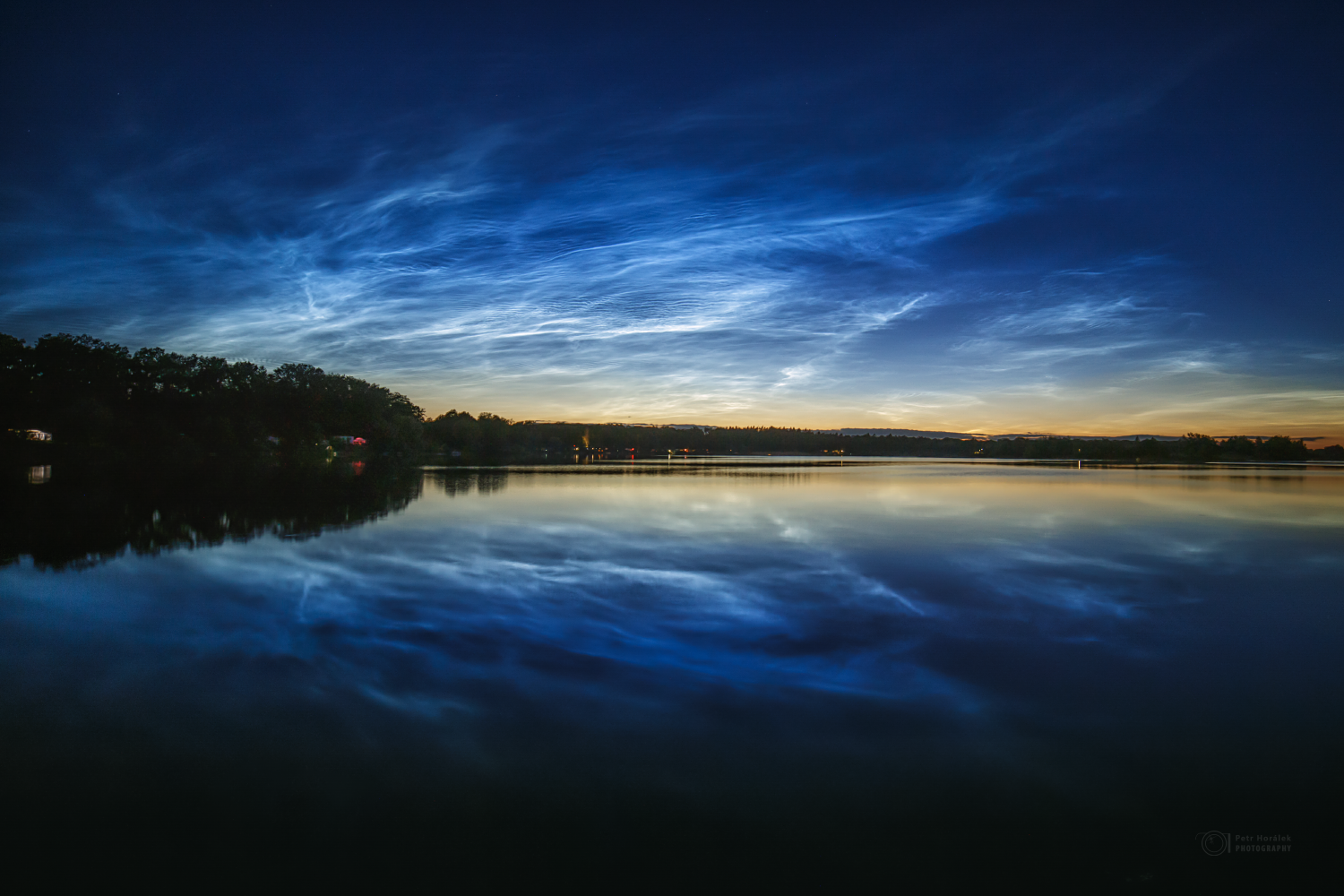
What are Noctilucent Clouds?
Noctilucent clouds are luminescent clouds visible in the northern part of the sky. They appear about 1-2 hours after sunset/before sunrise and capture attention with their “phantom-like” structure (stars can be seen through them) and distinctive silvery color, from which they derive their name.
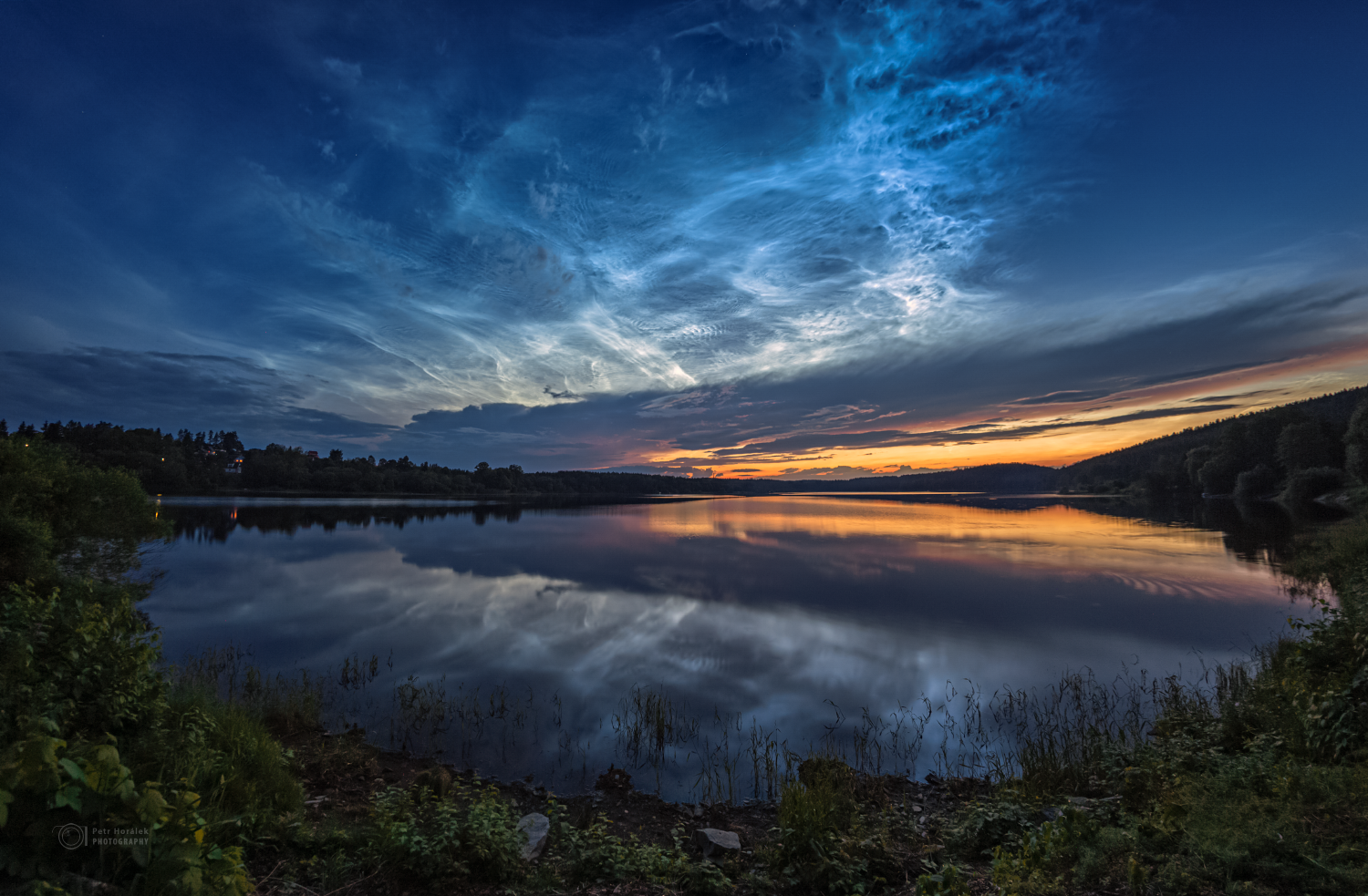
How Noctilucent Clouds Form
Noctilucent clouds form in the mesosphere at altitudes of approximately 76-85 km. They are the highest clouds on Earth. They consist of very small ice crystals (with diameters up to 100 nm) formed from micro-particles of dust. Micro-meteorites are likely the source of this dust. Noctilucent clouds only occur during the summer when the temperature in the mesosphere reaches its minimum, around -120 °C.
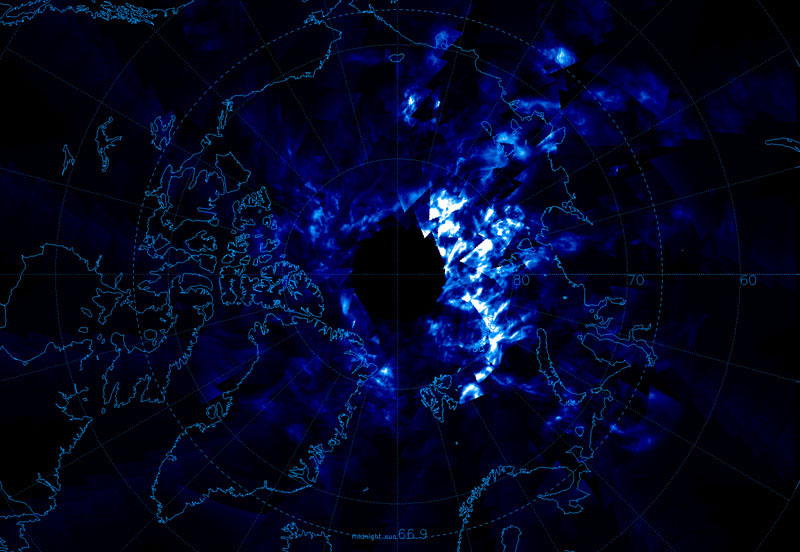
Distinguishing Noctilucent Clouds from Polar Auroras
Noctilucent clouds are often confused with polar auroras. It’s not surprising since both phenomena are observed in the northern part of the sky (referring to the northern hemisphere).
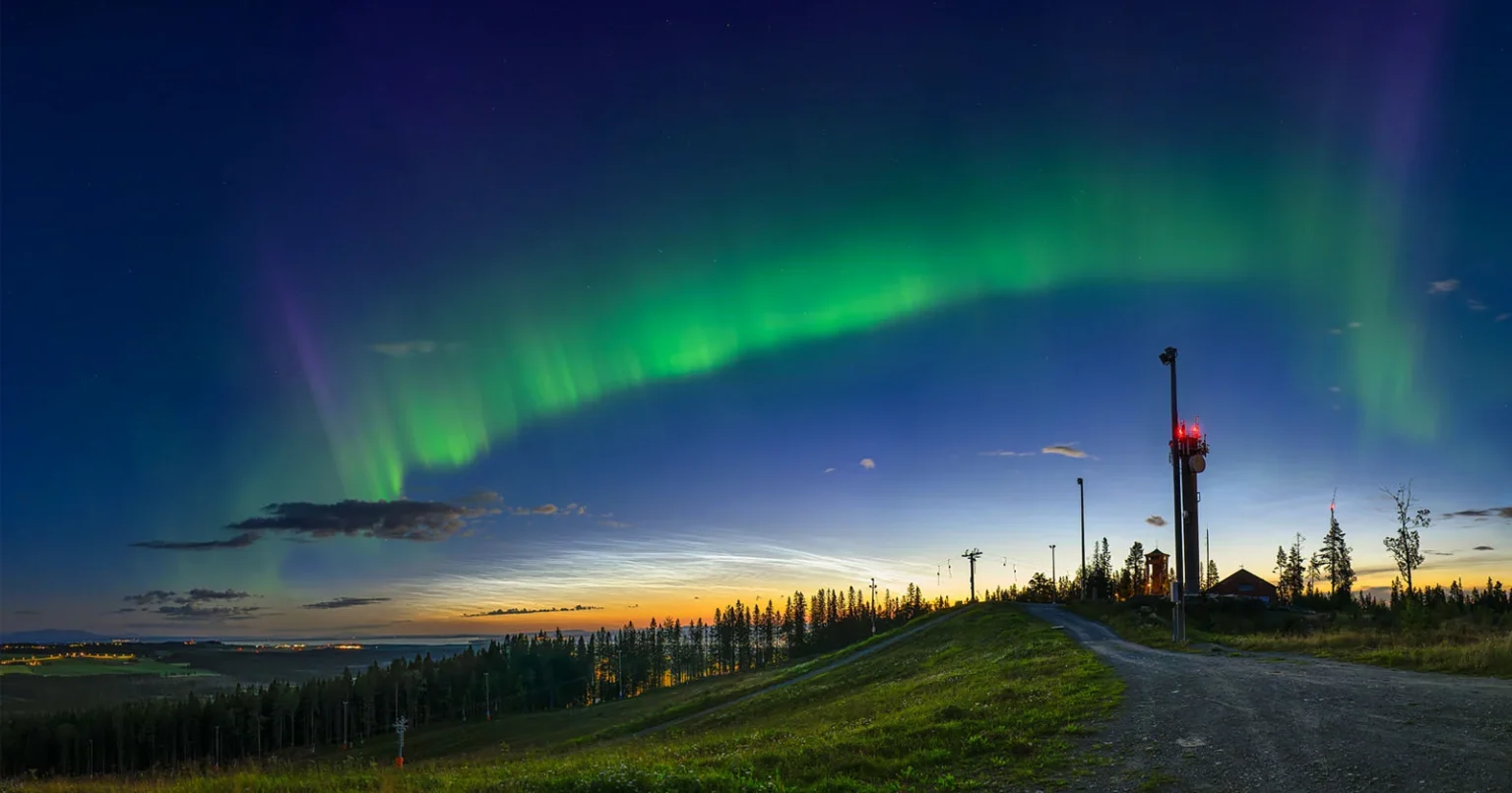
However, these two phenomena have completely different natures. While noctilucent clouds form within the Earth’s atmosphere, polar auroras are a result of the interaction between our planet’s magnetosphere and the effects of solar flares. Noctilucent clouds always maintain a constant color, whereas polar auroras exhibit green, red, or violet glow that rapidly changes over time.
They also differ in terms of visibility. Polar auroras are challenging to observe in urban settings, whereas noctilucent clouds are easily visible even in large cities, given the opportunity to observe the northern horizon.
How Noctilucent Clouds Differ from Regular Ones
Regular clouds are located at much lower altitudes, typically up to 13 km, and have a denser structure. After sunset, regular clouds quickly fade against the backdrop of stars, while noctilucent clouds, on the contrary, start to glow only an hour or two after the Sun disappears below the horizon.
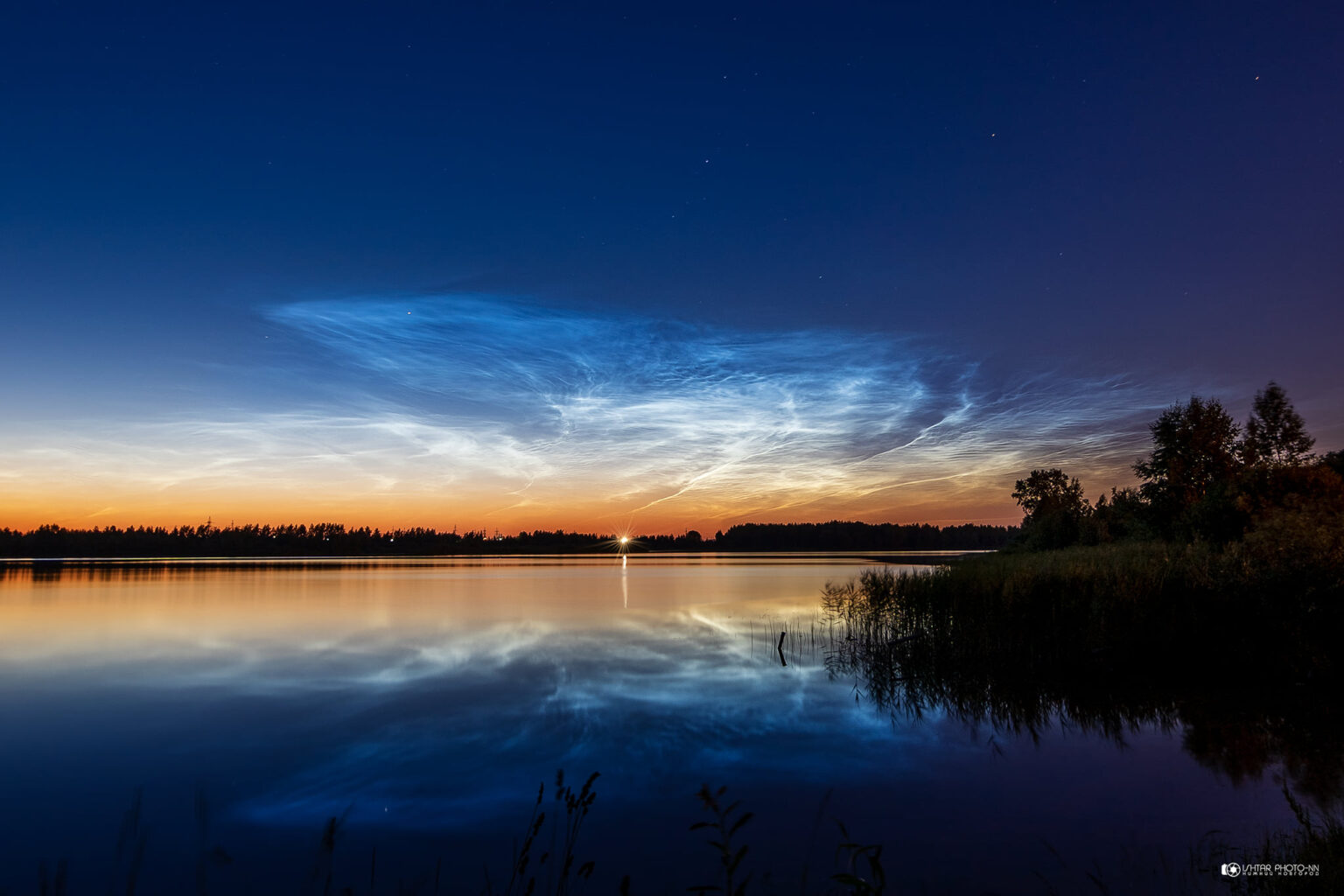
Period of Noctilucent Clouds Visibility
In the northern hemisphere, noctilucent clouds are observed from May to September, between latitudes of 43° and 65°. During this time, even at midnight, the Sun does not dip too far below the horizon, and its rays illuminate the mesosphere, making noctilucent clouds visible. At higher latitudes, this phenomenon cannot be seen due to the polar day. At lower latitudes, the Sun descends too low, preventing the observation of noctilucent clouds.
Can Noctilucent Clouds be Predicted in Advance?
No, they cannot. While astronomers can make approximate forecasts for the appearance of polar auroras, predicting the occurrence of noctilucent clouds in advance is not possible. The only way is to rely on neighboring regions where the Sun has already set, and local observers can confirm or refute the presence of noctilucent clouds.
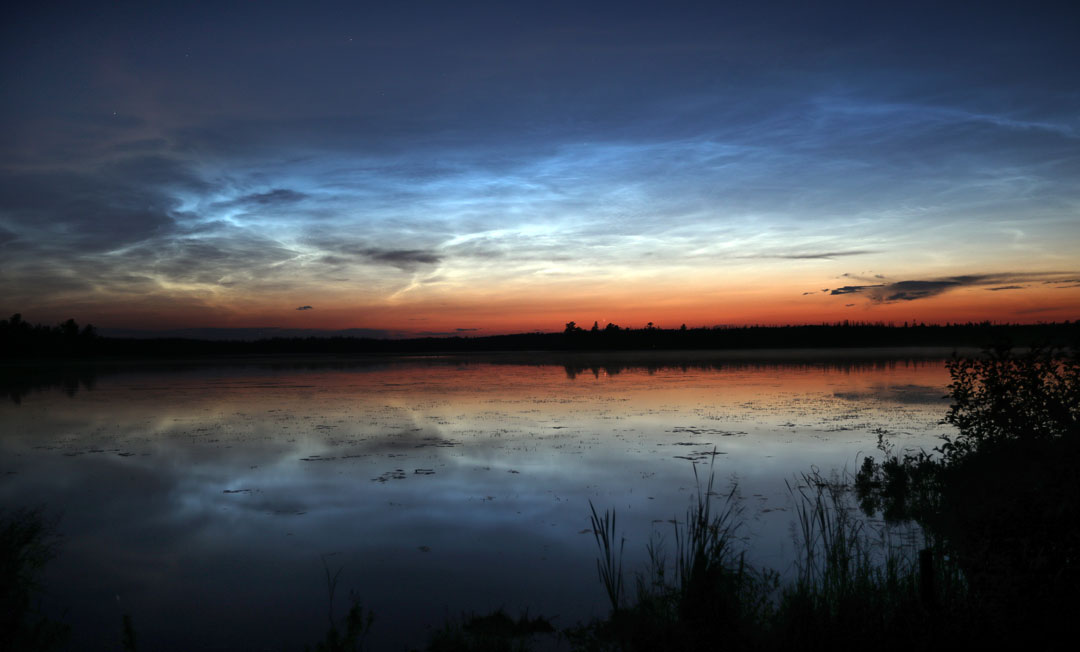
The Enigma of Noctilucent Clouds
One ancient mystery is associated with noctilucent clouds. The thing is, the first confirmed reports of their observation date back only to 1885. Considering the visibility of noctilucent clouds, this is very peculiar.
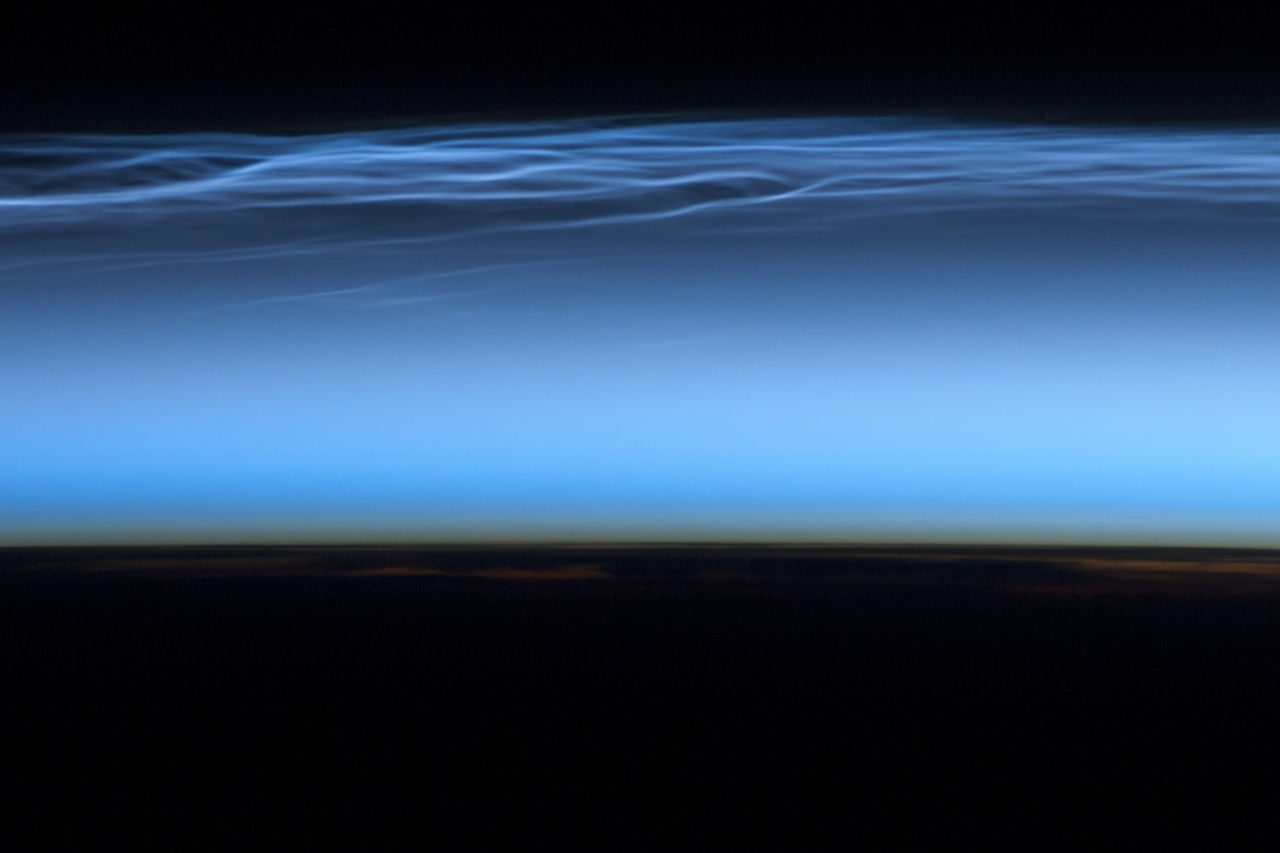
As a result some scientists suggest that noctilucent clouds are a relatively young phenomenon. Perhaps their appearance is related to the processes of global climate change. Some studies indicate a connection between methane emissions and the increase in water vapor concentration in the mesosphere, which contributes to the formation of clouds.
Be that as it may, noctilucent clouds are of significant scientific interest. They occur in a poorly explored region of the Earth’s atmosphere. Aircraft and balloons cannot reach an altitude of 80 km, while satellites cannot descend there. Therefore, scientists are actively studying noctilucent clouds, hoping to better understand the processes that occur in the Earth’s mesosphere. For example, they are used to determine the nature of the movement of air masses. It has been discovered that noctilucent cloud move exceptionally fast. Their average speed is about 28 m/s. Further study of silvery clouds will surely bring us many more discoveries.
